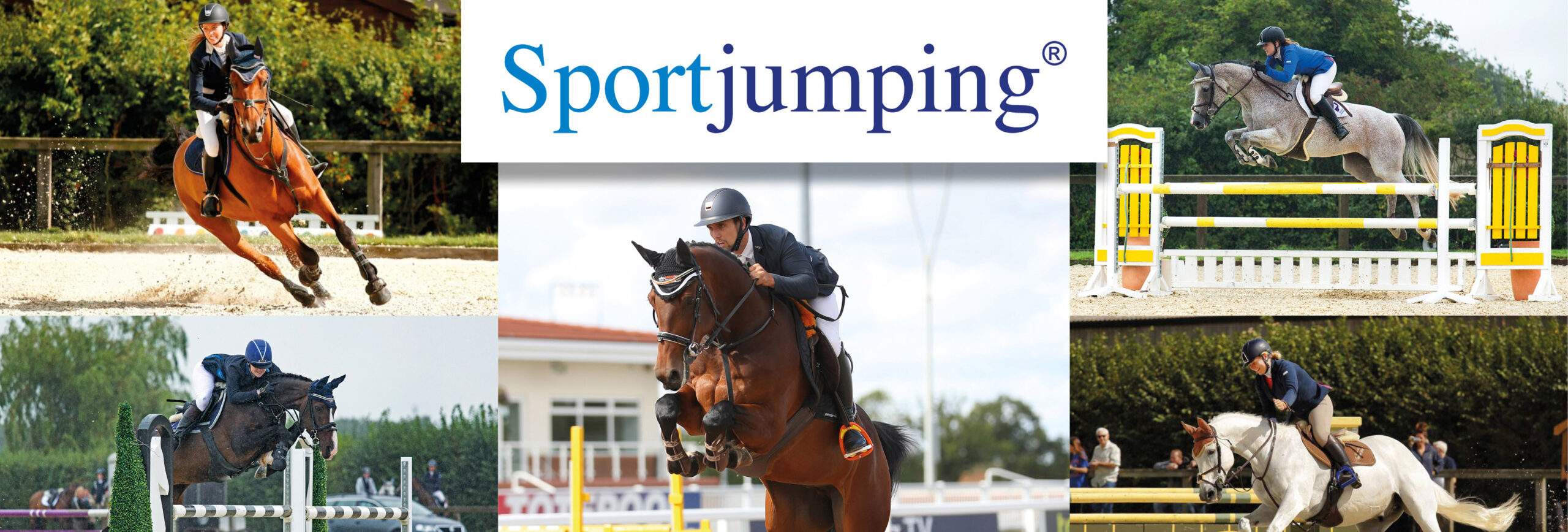A Punter’s Guide
Part 1 – The Basics
Part 2 – The Track
Part 1 - The Basics
Sportjumping® is a perfect amalgamation of Show jumping and Racing. There are a limited number of runners in a race. Competitors take on the track one at a time and aim to complete it in the fastest time. The favorite goes last, and has the biggest handicap. By going last they get to see what they have to beat and so have an advantage. On the flip side, the runner going first has no time to add by way of a handicap. This way, there is a level playing field and no clear winner.
Why do we handicap? Quite simply, if we did not, the top horse and jockey would almost certainly win every time. It discourages the ownership of anything other than the most talented horses. This precludes the purchase of success and allows people who cannot afford to buy top horses from competing within exciting and prestigious environments.
By handicapping both the rider and the horse by way of time added to the final time taken to complete the round, we create a level playing field. Every competitor has the chance to win which is crucial to a successful betting market.
The aim is to get round the track in the fastest time, but it’s not just that easy…
Every time a pole hits the floor, time is added. 1 fence down = 1 second added. A second fence down = another 2 seconds added. Another fence = 3 seconds, and so on. For example, if 4 fences hit the floor during a round, 10 seconds will be added to the overall time, plus the handicap.
So a perfect round is not only fast, but clear. And just like in racing, there are ways to predict who is likely to win. This Punter’s Guide will take you through some of the most important things to look out for…
1) Technique
What should the horse look like going over the fence? Ideally, the front legs should be tucked tightly up in front of its body. The further forward its head is, the higher its shoulders can come and therefore the tighter its front legs can be. The hind legs should lift high above the fence and not trail behind. Often, you’ll see a horse flick its tail up which helps this action even more. Here’s an example:
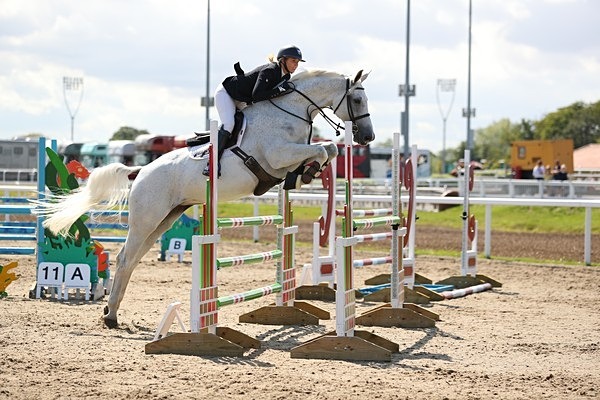
A horse who exhibits these techniques is described as being “careful”. Sometimes a horse will be tight in front and not so good behind, or vice versa. The more careful a horse is, the less likely it will be to touch a fence.
Another term referred to is how “scopey” a horse is. This simply refers to how high the horse can jump. Very scopey horses will find fences easier to get over than those not so scopey, and they tend to leave a lot of air between themselves and the top pole. So if the horse you bet on is scopey and careful, you can be pretty sure it won’t hit a fence. But beware; it might spend too long in the air which means more time added to the round.
While the aim is to go fast, the horse will not make this shape in mid-air if it is running, flat out at a gallop. The horse has to canter, in perfect control, so that it can gather enough power to make this ideal shape.
2) The Partnership
“It’s a lot like nuts and bolts – if the rider’s nuts, the horse bolts!” ~Nicholas Evans
A horse is not a machine. If it doesn’t want to do something, it won’t. It follows therefore, that if its rider asks it to do something, and it does so without question, it’s because the pair have built up a relationship based on understanding and trust.
During a round, there is a constant conversation between the horse and rider; “shorten your stride”, “lengthen your stride”, “speed up a bit”, “slow down a little”, “as soon as we land, we’re making a sharp left”, “I know you think this fence is a bit scary, but its fine. Honestly”.
In-between and particularly on the approach to the fences the horse must stay rhythmical and balanced. A balanced horse will be more likely to make the ideal shape and be able to turn more accurately upon landing.
The stronger the partnership and clearer the dialogue, the faster the pair will complete the track.
Part 2 - The Track
Sportjumping® tracks are unique. They are technical throughout and are designed to test the horse and rider at every obstacle. Our tracks require a delicate balance of speed combined with the utmost precision and tactical preparation. This Punter’s Guide will take you through the essential elements of what a track comprises of.
Strides and “seeing a stride”
Imagine you are running on foot and a log is in your path. You are going to jump over the log. You will subconsciously adjust the length of your step to ensure that you hit the right take off point to successfully get over the log.
Most people don’t know this, but it is the rider’s job to regulate the horses stride to ensure that it hits the right take off point. To do this, the rider has to be able to lengthen or shorten the horses stride. This is what consists of having good control. If the horse isn’t listening, the chances are the rider won’t be able to get it to the right take off spot, which means it is unlikely to clear the obstacle successfully.
There is also every possibility that the horse is listening, but in fact the rider doesn’t get the horse to the right take off spot. This is called “missing your stride”. If you get too close to the fence, the horse won’t have enough time to get its front legs out of the way. This is called being too “deep”. If the horse takes off too far away, the horse might not have enough power to get over the fence. This is called “standing off”.
With this in mind, a commonly accepted theory is that it is the rider’s job to get them both correctly to the fence. After that, the horse has to get them over it. Now it’s time to take a look at some of the most common obstacles found within a track…
Upright/ Vertical
An “upright” or “vertical” looks like this:
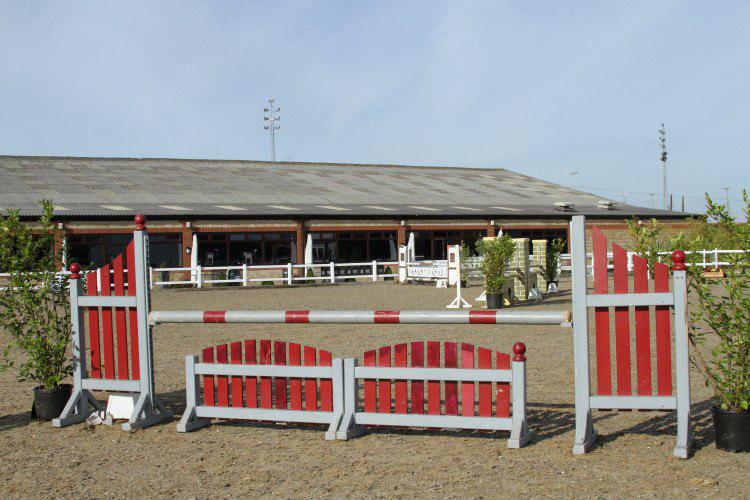
It is arguably the most straightforward type of fence to jump.
Oxer/Spread/Parallel
An “oxer”/”spread”/ “parallel” is essentially two verticals placed together. This is ever so slightly more difficult than an upright in that it is a more substantial obstacle to get over and looks like this:
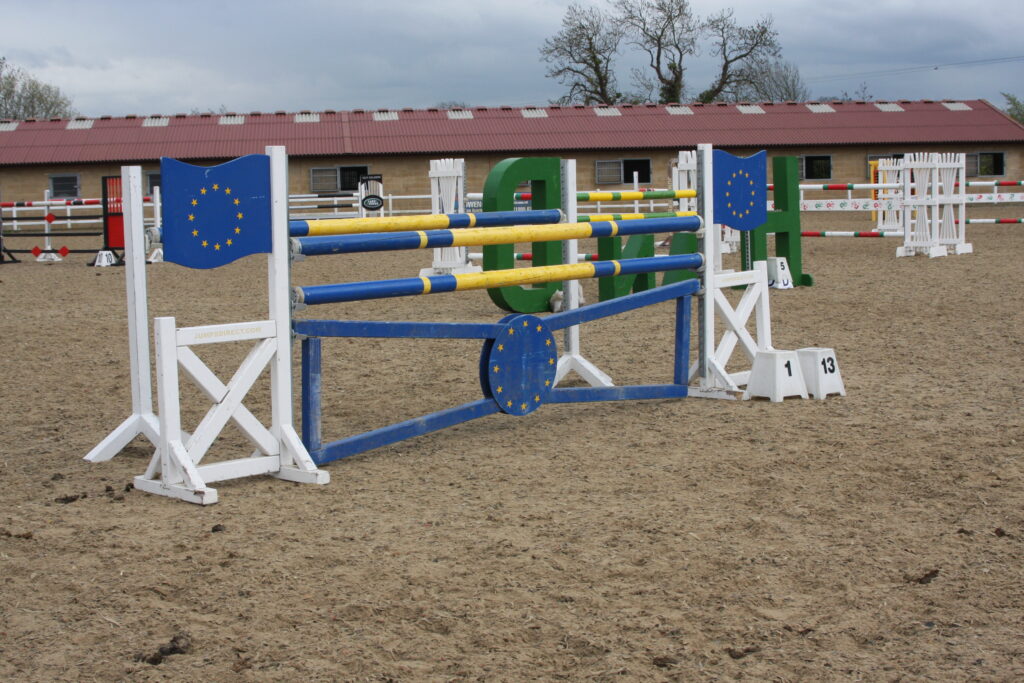
Double/Tripple/Quadruple
A double, triple or even quadruple is where uprights, oxers and/or a combination of both are placed in succession with either 1 or two strides between them. A quadruple looks like this:
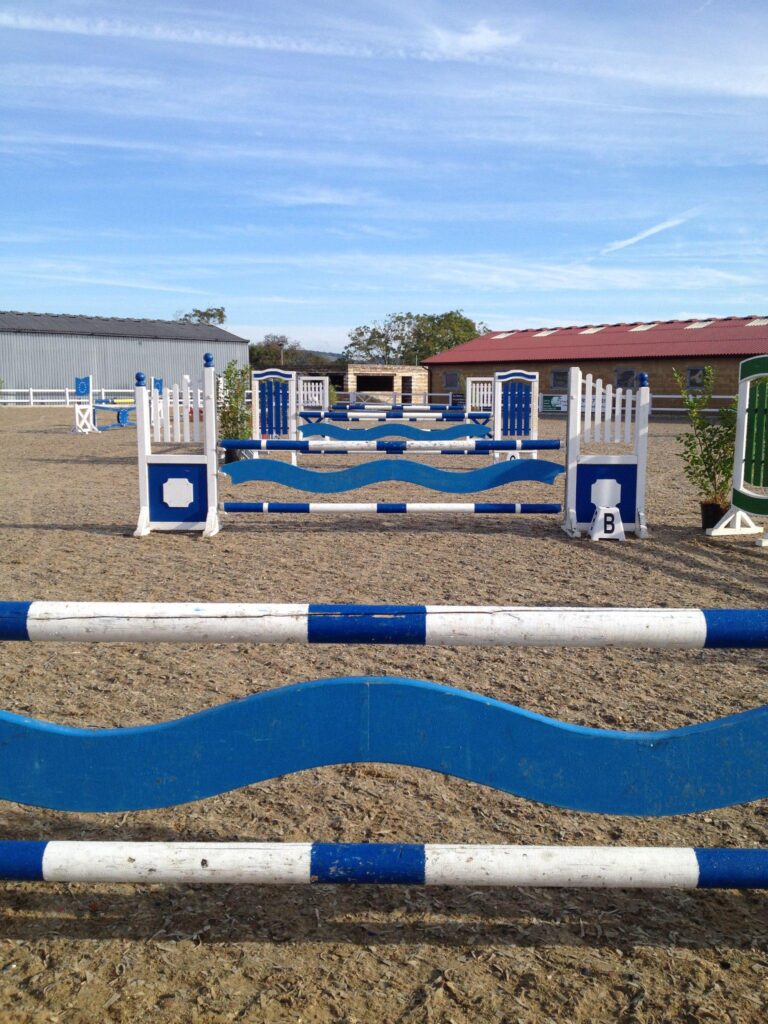
Related Distance
A related distance is where either a spread or an upright are positioned with a set distance between them. For example, we could have a spread with enough space for 5 normal strides and then an upright. The fences don’t need to be in a straight line. There can be a slight bend in direction between them. This is called a “dog leg”.
Related distances become trickier when the course designer purposefully doesn’t measure enough space for a whole number of strides. He may, for example, leave enough room for 5 and a half strides. So the rider’s dilemma becomes, do you come down in 5 or 6 strides? If you come down in 5, you will certainly save some time however you run the risk of the horse flattening and knocking the second part of the distance down. If you come in 6, it might well cost you the crucial second which could have won you the class.
It is essential for the riders to have a solid understanding of their horse and what it can cope with. A larger, scopier horse could cope with coming down in 5, while a smaller horse with a smaller stride would be better to come down in 6.
Twists, Turns and Angles
So, most courses or tracks will comprise of uprights, spreads, doubles/triples/quadruples and related distances. What makes all these obstacles even more difficult is where they are positioned within the track.
The easiest way for a horse to approach an obstacle is straight on, with balance and rhythm. To approach an obstacle within a track full of twists, turns and angles makes it extremely difficult for the rider to hit the right take off spot, while trying to keep their pace up, but without running or flattening, yet always staying balanced.
More often than not, the fastest rounds are not those which appear to be outrageously galloping round the track. They are indeed fast, but above all cool, collected and with an outstanding ability to turn. If we accept the premise that the fewer the strides taken, the lesser time taken, it follows then that a horse and rider who can land on the other side of a fence and instantly turn back to the next will be able to take the shortest possible route. This takes less strides and therefore less time. Above all, this requires the horse to listen intently to the rider.
Teamwork
A Sportjumping® track is all about teamwork. Both members have to pull their weight and one cannot compensate for the others inadequacy. For a rider to forge a successful relationship with a horse it is nothing short of marvelous. It takes years of practice. There is no verbal communication. It is an unspoken bond built upon trust.
